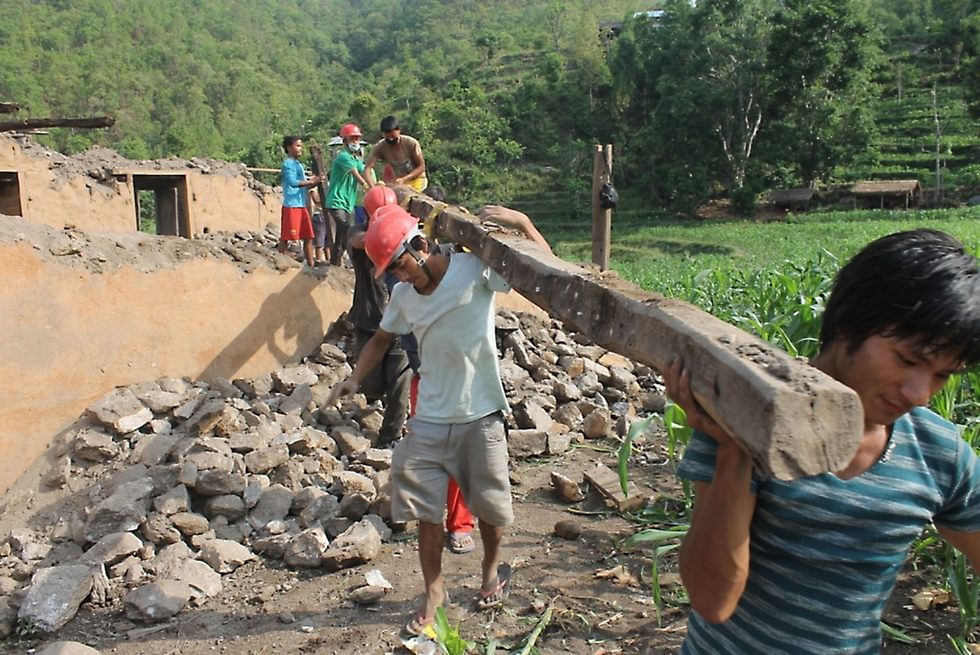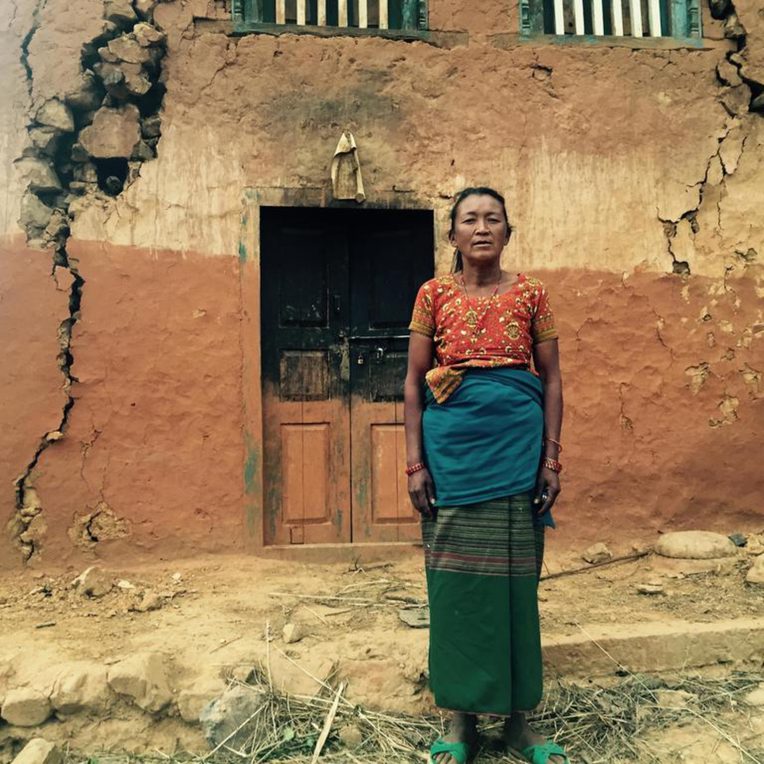The Question of Locality in Rupture
From the Series: Aftershocked: Reflections on the 2015 Earthquakes in Nepal
From the Series: Aftershocked: Reflections on the 2015 Earthquakes in Nepal

The immediate reaction of those hit by the earthquake in Nepal, whether physically or emotionally, was that of shock, confusion, anger, and grief. Chaos took on new meanings beyond the political unruliness and ungovernability that has marred the country in the twenty-first century. Chaos became personal, a mark of emotional turmoil and hurt. Indeed, localized experiences in the immediate aftermath of the earthquake have given rise to new forms of belonging in Nepal.
The earthquake invoked raw emotions of fear and solidarity that cut across social, economic, and political categories. Almost all private homes were abandoned and public grounds were spontaneously occupied. Abhi Subedi, a well-known Nepali poet, wrote that “I looked at my house as the street dog would have looked at it.” The rich slept in tents with the poor. It is worth celebrating that momentary solidarity, even if unity between ethnicities, classes, and regions fizzled out within weeks.

Nepalis tried to make sense of the calamity by connecting their own experiences with those of their kin during a similar earthquake in 1934. A vernacular public meaning emerged through reenactment of the social behavior of the past, whether by cremating and mourning the dead, invoking cultural rituals to warn of imminent danger, or seeking and offering help. Temples, clubs, and associations sprang into action to feed the hungry and to treat the injured. Prayers were performed to offer peace to the gods and calm the souls of the departed.
Kathmandu has seen a rapid shift in mood, intensity, and introspection every day since the rupture. To lose sight of the particularity and order of that shift would be to flatten its meaning—a situation Nepalis have ardently protested against. For example, the Twitter campaign #GoHomeIndianMedia protested what many considered insensitive and boorish coverage by Indian television networks. The campaign took social media by storm, and it was featured as the top global hashtag on World Press Freedom Day.
Understandings of the earthquake from outside Nepal were markedly different. Although I had stayed in touch with my family in Kathmandu throughout the earthquake, I realized upon returning from Delhi that the mood on the ground was very different from what I had sensed from telephone and email correspondence (and also very different from what circulated in social media and newspapers). While Nepalis were frustrated by the inefficiencies and corruption of the state and of NGOs, they were also aware that no institution could offer a panacea.
Anthropologist Lauren Leve argues that the resilience she saw around her in response to the earthquake was “an immediate collective response to a calamity,” different from other types of resilience. Furthermore, Seira Tamang cautions that resilience should not serve as an excuse for donors and policymakers to do nothing. I argue that a more nuanced understanding of resilience is necessary to capture what the earthquake meant for those who were affected. The importance of fieldwork needs to be reemphasized here, without discounting the fact that any rupture forces a researcher to rethink the findings of the past and to be open to new affiliations and sensitivities. By definition, ruptures necessitate partial or complete reevaluation of previously held knowledge, practices, and beliefs.
Belonging in the field as a researcher comes with duties. Indeed, all of my colleagues conducting research in Nepal were involved in one or another act of giving. It was only after responding to the initial, urgent calls for relief that introspection about scholarly duties could take place. A researcher’s duty is to document and inform, as well as to institutionalize knowledge. But what are the ethics of research in dire situations like this one? To flood mourning villages with suitcases and research assistants would smack of colonialism, regardless of the nationalities involved. I chose to visit the village of Lele at the southern end of Kathmandu, accessible on a public bus route, because it seemed that my presence there would be less intrusive than it would in other areas. The villagers and I talked about how “lucky” we all had been: them, for surviving even if their houses had collapsed and me, for having all of my family alive and only one sibling living in a tent. Certainly, it should be pointed out, our luck was not equal. I only felt on more equal footing with my informants once I reached Birgunj, the entry point for Nepali relief materials from India, because the jolt of the earthquake had been faint and the casualties were negligible. There, I was more comfortable interviewing Nepali and Indian officials about the customs policies and procedures that had been put in place since the crisis hit to ensure a steady supply of basic goods to the most heavily impacted areas.
Belonging as an anthropologist in the aftermath of such crises necessitates a rethinking of anthropology as a discipline. As Achille Mbembe and Sarah Nuttall (2004) have argued, even inadvertent constructions of archetypes about “third world” peoples and circumstances are a step back for modern social science, rather than a way forward. Jean and John Comaroff (2012,11) go further in their proposal for a “counter-evolutionary” relationship between Euro-America and the global South, one that is not necessarily concerned with “revers[ing] the telos at the heart of modernist reason . . . [but rather calling for] the epistemic reflex on which that reason is founded.” I situate my own reflections on Nepal’s earthquake in the context of interventions like these, which challenge the de facto hierarchy of knowledge. I encourage all of us to consider the overlap between categories of insider and outsider while digging through localized experiences of the event and its aftermath.
Comaroff, Jean, and John L. Comaroff. 2012. Theory from the South: Or, How Euro-America is Evolving Toward Africa. Boulder, Colo.: Paradigm.
Mbembe, Achille, and Sarah Nuttall. 2004. “Writing the World from an African Metropolis.” Public Culture 16, no. 3: 347–72.